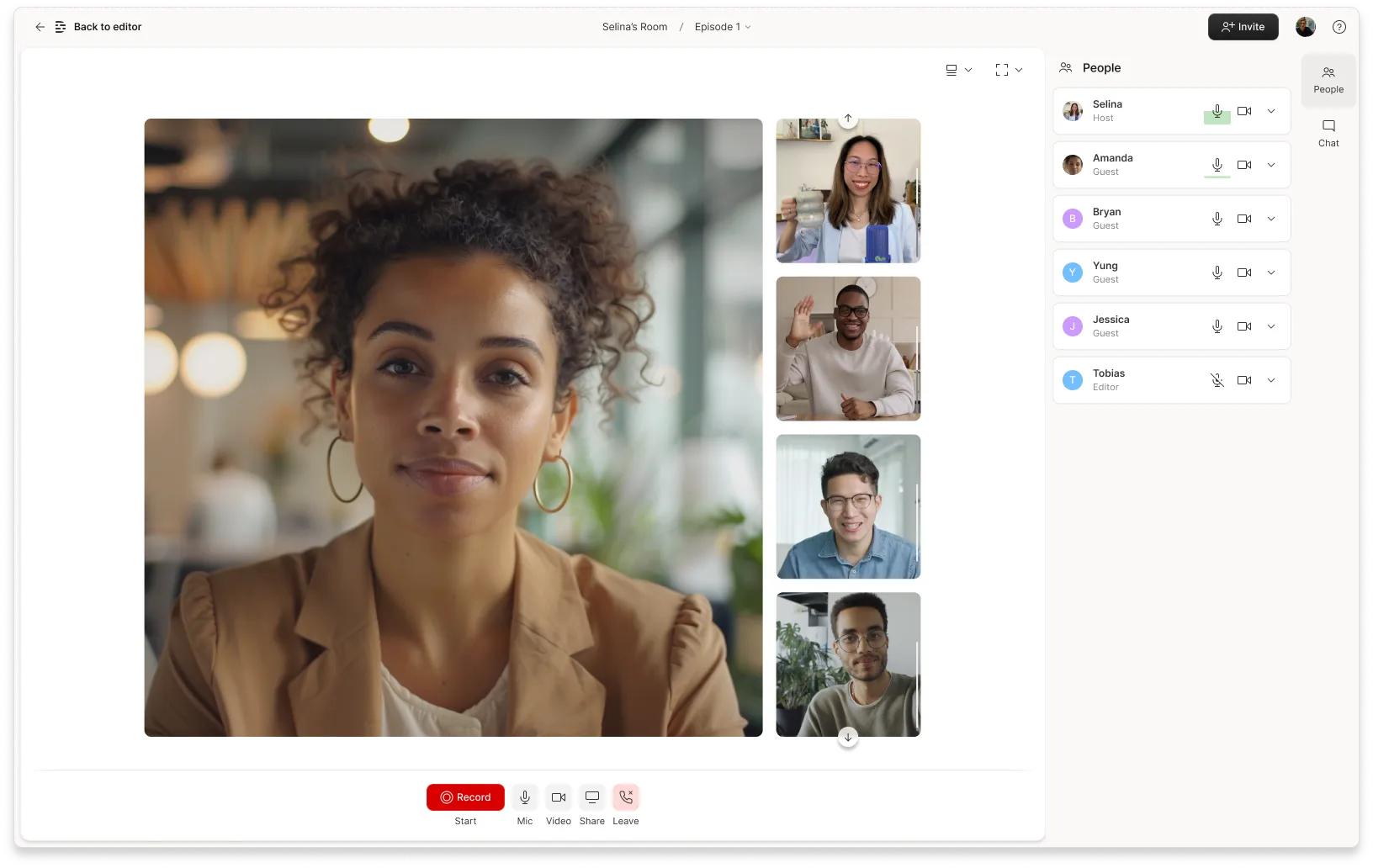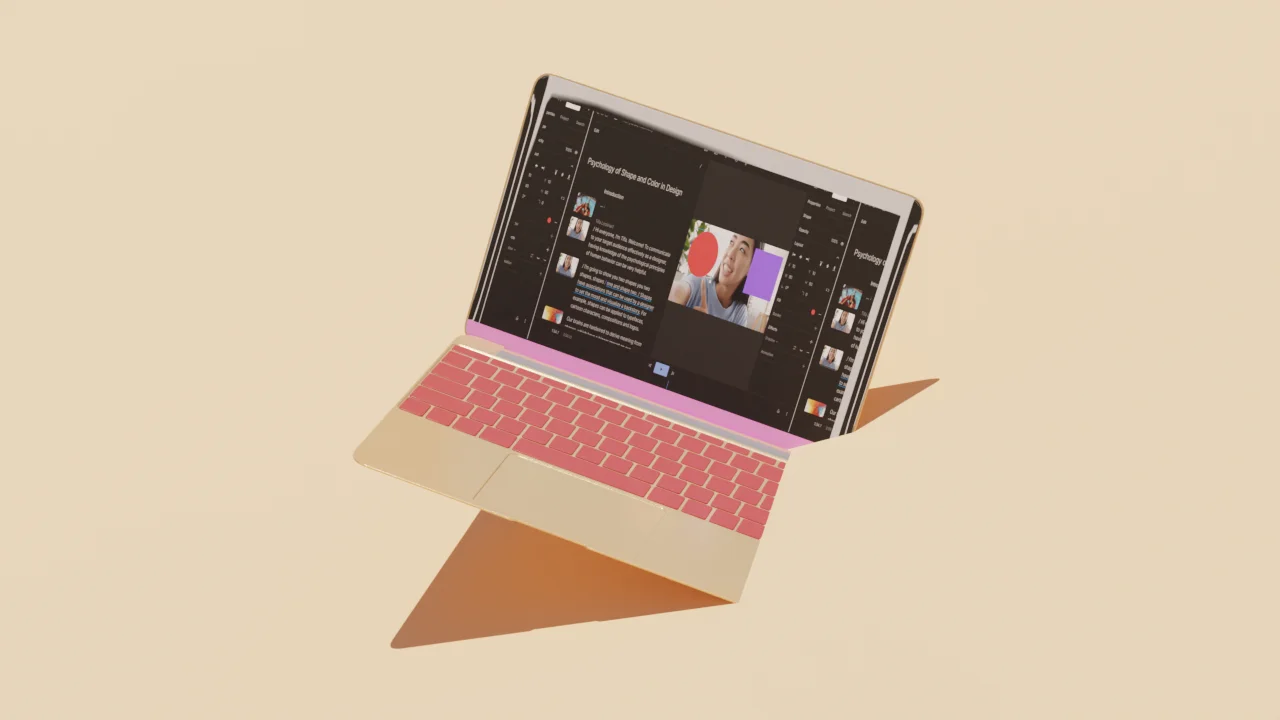But that doesn’t mean they don’t put any thought into recording options. At the very least, every creator should aim for a level of production value that doesn’t distract the viewer, or make it hard to see or hear what’s in the video.
Recording a decent-looking video might take a few tries, but with the right gear, environment, and tools, you can become a capable creator. The more you know going in, the less trial-and-error you’ll have to endure. Here’s some advice to get you started.
It all starts with your camera — the thing that will capture your video. These days, you’ve got options. You can use an actual video camera, a smartphone, a webcam, or a computer with a webcam.
Here’s a tutorial for the different devices, with video recording tips to improve your video quality.
Table of contents:
- Recording with a camera or phone
- Recording webcam video
- Recording for Mac and PC
- 9 tips for recording video
Recording video with a camera or phone
The best way to record a video is with a camera or smartphone. It will be easier to move around and set up, and in general you’ll get much higher-quality video.
Here’s how:
1. Set up your equipment
Set the stage for your subject, whether it’s you or someone else. Adjust the lighting, test your mics, and establish your basic video capture settings.
Make sure your phone has enough battery life and storage space so you can record without interruptions.
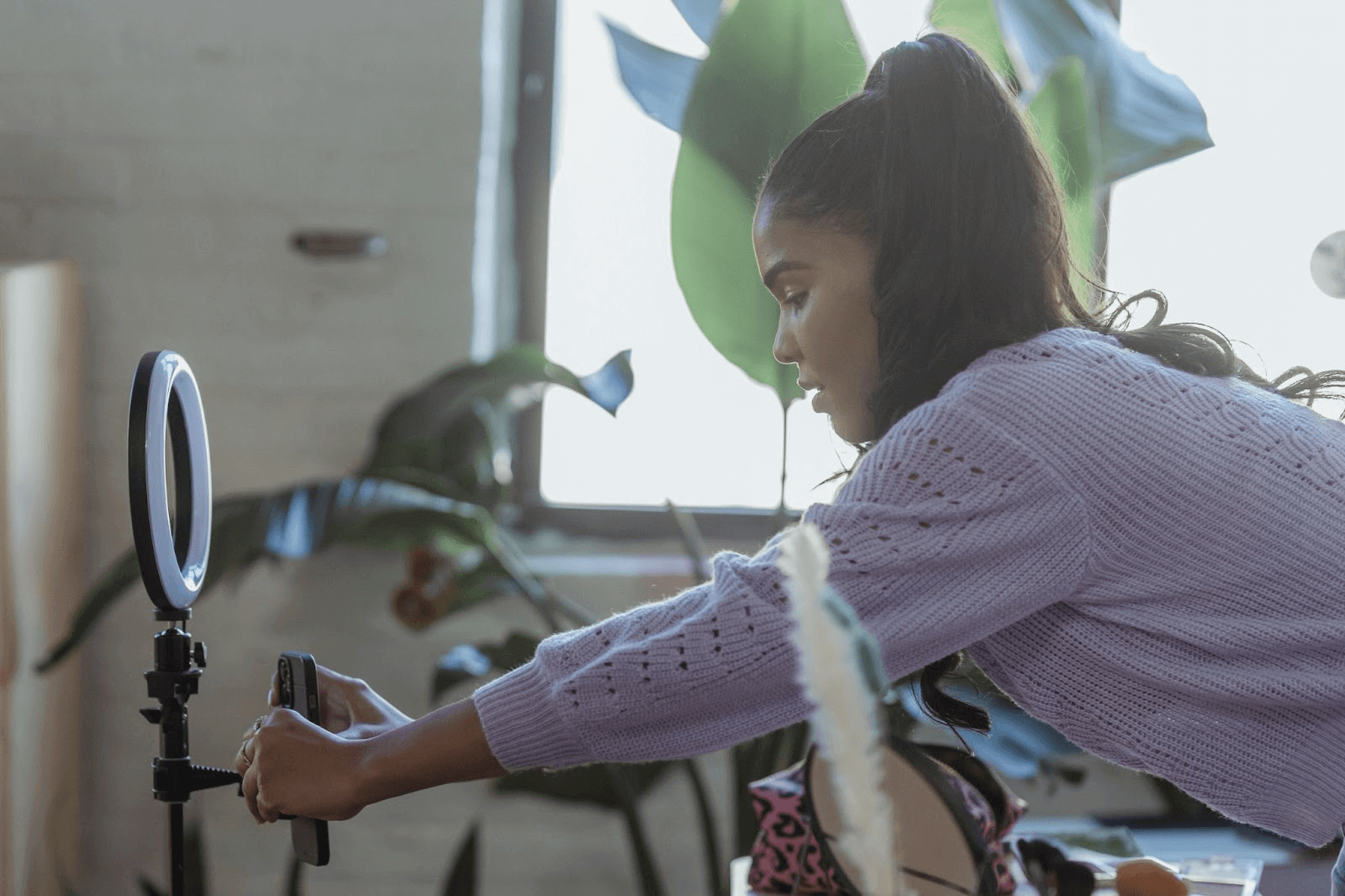
If you’re recording yourself, use a tripod to hold your camera or smartphone steady while you record. On smartphones, it’s better to use the regular lens than the selfie cam.
2. Test out your setup
Once you get yourself situated in the frame, mark the position so you know where to sit or stand and how to position your body (especially if you’re a one-person production team).
Take a few test recordings to ensure you’re where you need to be, and that all of your other recording settings are as you want them.
3. Record
Once you set up your video equipment, find the record button on your camera or phone. Press it when you’re ready to capture footage.
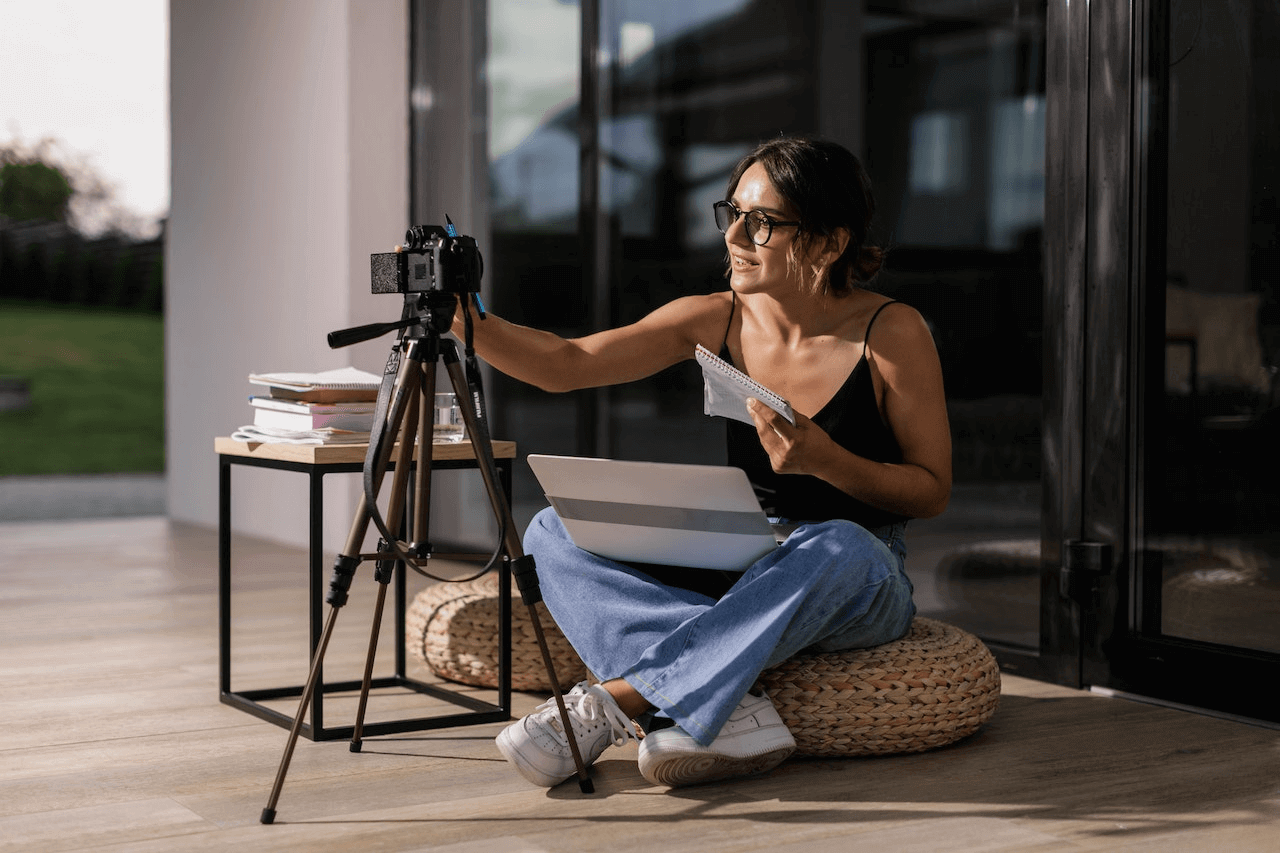
Recording video with a webcam
The steps for recording video through a webcam depends on the type of computer you’re using. To record with your computer webcam:
1. Open your camera program
Browse through your applications to find your native video recording software. On Mac OS, it’s probably QuickTime or Photo Booth.
For QuickTime, click “File” and then select “New Movie Recording” to open the program.
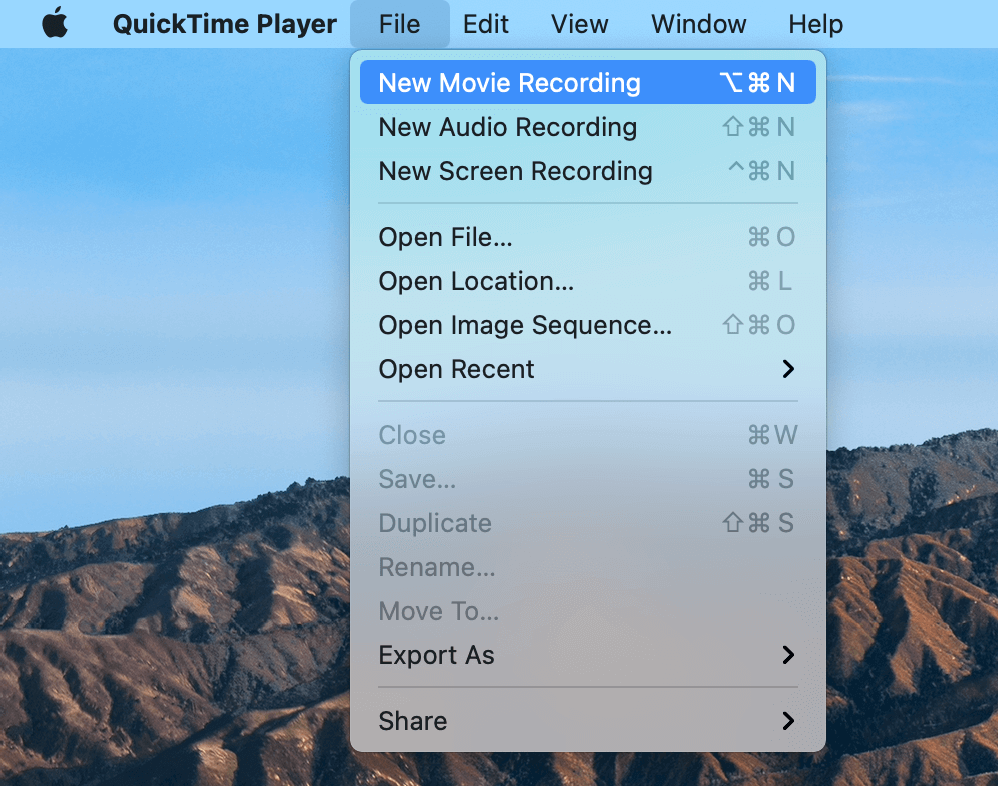
On a Windows PC, it’s the Camera app.
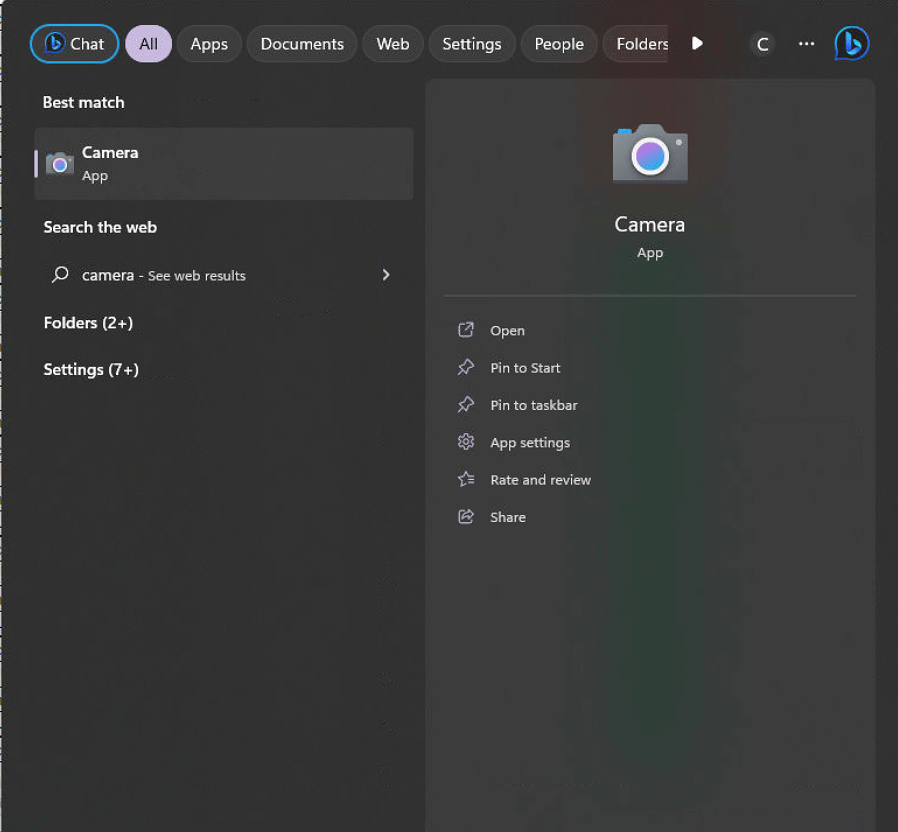
If you’re having issues with the webcam, you might need to change permissions in your computer’s settings.
2. Get set
Position yourself (or your subject) in front of the laptop or computer camera. Make sure your background is arranged the way you’d want. Get rid of any clutter or distracting stuff, and make sure you’re lit well.
3. Record
As you might expect, you’ll click “Record” button to start recording.
- In Photo Booth, this button is right in the center.
- In QuickTime, hit the red record button in the center of your screen.
- In the Camera app on Windows, navigate to the video icon and click the record button.
4. Save your footage
As you save, note where your computer saves your recording file (your desktop, a downloads folder, etc.) so you can easily find it later to edit or upload.
Recording video on Mac and PC
Another way to record via computer is to record your screen, usually while you provide some voiceover narration.
If you can’t locate the built-in screen recording feature or if it’s not working, check your operating system’s privacy settings or see Microsoft’s instructions for enabling screen capture.
Some screencasting software programs (like Zoom or Movavi Screen Recorder) have a screen recording feature with audio recording, though many devices have their own built-in default features to capture screens with sound.
Here’s how to do it on a Mac and PC:
For Mac
To record your computer screen on a Mac, press Shift + Command + the number “5” at the same time to bring up the screen capture toolbar.
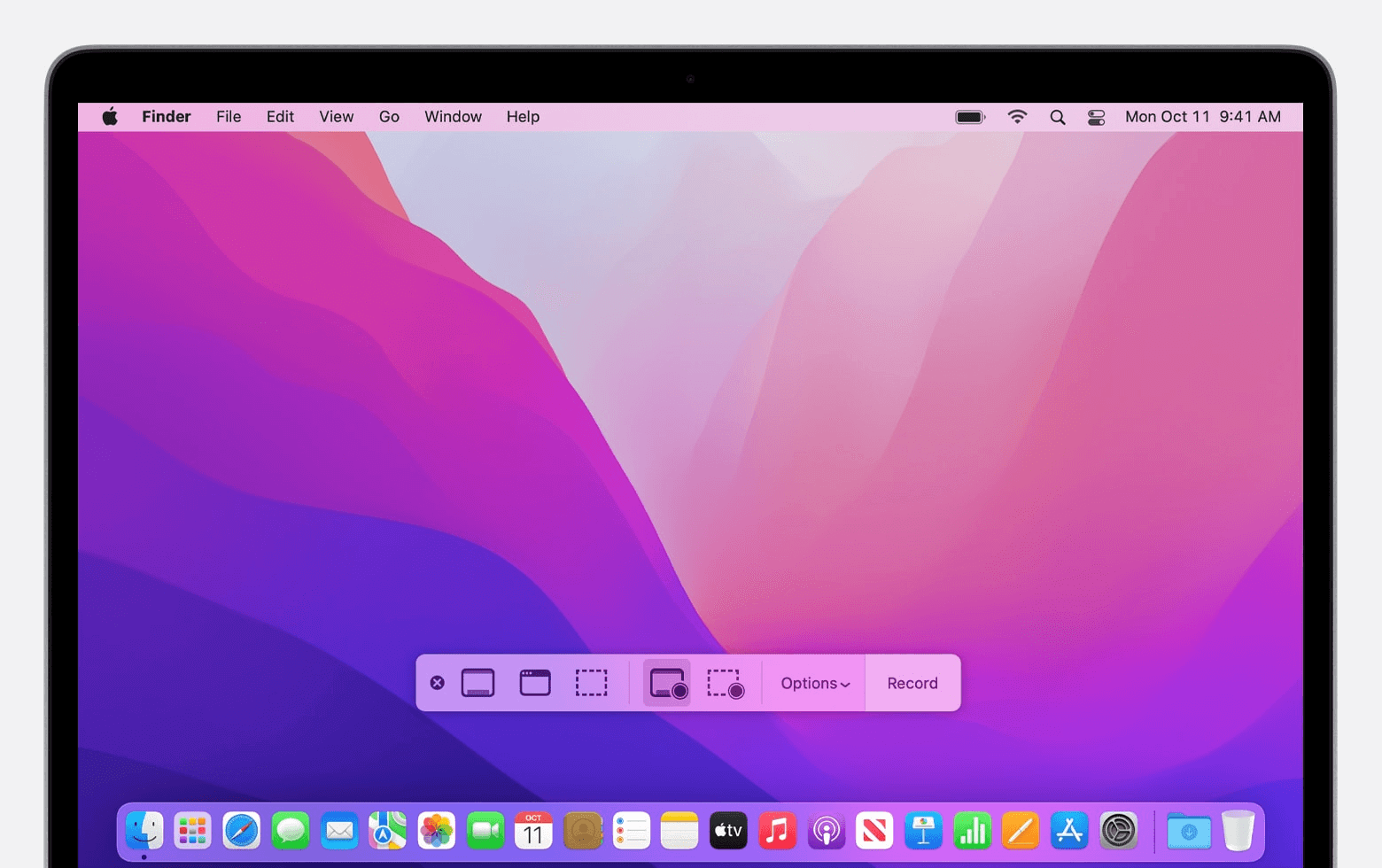
Source: Apple
Select whether you want to record the entire screen or use the crosshairs tool to outline a specific portion of your screen to record. Click “Record” when you’re ready. Remember to note where the file saves.
For PC
To record your screen on a Windows PC, press Win +Alt + the letter “R” to instantly start or stop recording your screen.
You can also record via XBox Game Bar, which is built into the Microsoft OS — just open Game Bar and click “Record” (the button with a single, solid dot). By default, these video files will save in your “Captures” folder. You can also take a screenshot by using the Windows + Alt + Print Screen key combination.
Note: Descript has a screen recorder that does everything the built-in features do — plus it gives you an auto-generated transcript, which you can edit to edit your video, so you don’t have to move a bulky file between apps.
To use it, just click “File” and select “New Screen Recording.”
9 tips for recording video
Recording videos to upload on your social media channels or website will go more smoothly when you're prepared.
Here are some very basic tips to help you capture the best video possible:
- Check your audio settings. If you’re using an external microphone or webcam, make sure each is enabled to capture sound. Some recording tools don’t enable access by default, and it’s up to you to configure your device to properly record and store sound. If you’re plugging an external mic into a smartphone or computer, check that the devices are compatible.
- Check your video settings. Before you start recording video clips, make sure you’re recording in the right frame rate (like 30fps or 60fps). Aspect ratio and resolution are two video components that go hand-in-hand and ultimately determine what your video frame looks like, and the density of its pixels. Note that for social media, you’ll most likely want a vertical (portrait) aspect ratio, and for YouTube videos you’ll want horizontal (landscape). The right settings will depend on your particular project and hardware capabilities, but configuring this stuff before you hit record will save you a post-production headache later.
- Get the right gear. Audio almost always sounds better through an external microphone than it does through a phone or internal computer microphone. Similarly, handheld or tripod cameras (like a mirrorless or DSLR camera) can capture higher-quality video than most webcams or smartphones. If you have room in your budget, invest in some affordable camera gear so you can record audio and visuals and video editing tools so you can produce videos that match your brand.
- Adjust the lighting. Good lighting is a major component of high-quality video recording. When a scene is lit correctly, the audience can see everything you want them to see in frame clearly, without image-distorting shadows or unflattering shots. A few things to avoid: recording directly into light, backlit subjects, and overhead lighting. Use a ring light or softbox to enhance or diffuse your light sources accordingly.
- Record in a quiet environment. You probably want your audience to hear what you’re saying. But recording amid ambient noise — barking dogs, passing trains, air conditioners, fans, or nearby conversations — can disrupt your audio and make it harder to listen to. To capture the best-quality sound, record in the quietest location.
- Shoot in RAW. Shooting your video in RAW means capturing the original footage without any heavy filters or special features. Getting that content without extra layers will make post-production video editing tasks like color correction, animations, cursor effects, or brightness adjustment much easier.
- Pay attention to posture. You don’t have to sit like a statue and stare, unblinking, at the lens when shooting a video podcast or social media clip. But when you sit up straight and maintain eye contact with the camera, viewers will see that you’re present and engaged.
- Practice your script. Know what you want to say before you start saying it. A well-crafted video script will help you hone your message, so you spend more time connecting with your audience and less time fumbling over your words. If it’s helpful, you can also use a teleprompter program to stay on track. Just remember to capture a few frames of silence both before and after you start recording to leave room for any necessary video or audio edits.
- Do a test run. Practice recording yourself with your method of choice — whether by smartphone, webcam, or handheld — and study the results. Is your picture quality grainy or choppy? Is there too much static in your audio recording? Make any necessary adjustments to your settings before the final recording session.
How to record a video FAQ
What is the best way to record a video?
For most people, using a phone or webcam is a quick and reliable option—just open your camera app and hit record. If you’d like to record on your computer without any hassle, you can use Descript’s Quick recorder or the in-app recorder. Make sure to pick a quiet space with even lighting, and frame your shot so viewers can clearly see you or your subject.
How do I make a video recording?
To make a video recording, choose a recording device like a smartphone or a camera, frame your shot, check lighting and audio, then press the record button to capture the video.
How do you record your screen?
You have a few options. Many computers have a built-in screen capture tool (like Windows’ Game Bar or macOS’s screen recording utility). You can also use Descript’s screen recorder—either in the desktop app or the Quick recorder. They capture video and audio at the same time, and your recordings will be stored in your Descript drive, so you can edit them instantly.
How do I record a video on my phone?
To record a video on your phone, open the camera app, switch to the video mode, frame your shot, and press the record button to capture the content.
How do I record a video on my computer?
You can use your computer’s built-in camera app (like Camera on Windows or QuickTime on Mac) or Descript’s Quick recorder. If you choose Descript, open the recorder, select your camera and mic, and press Record. Once you finish, your file is ready to edit in Descript or share instantly.



























